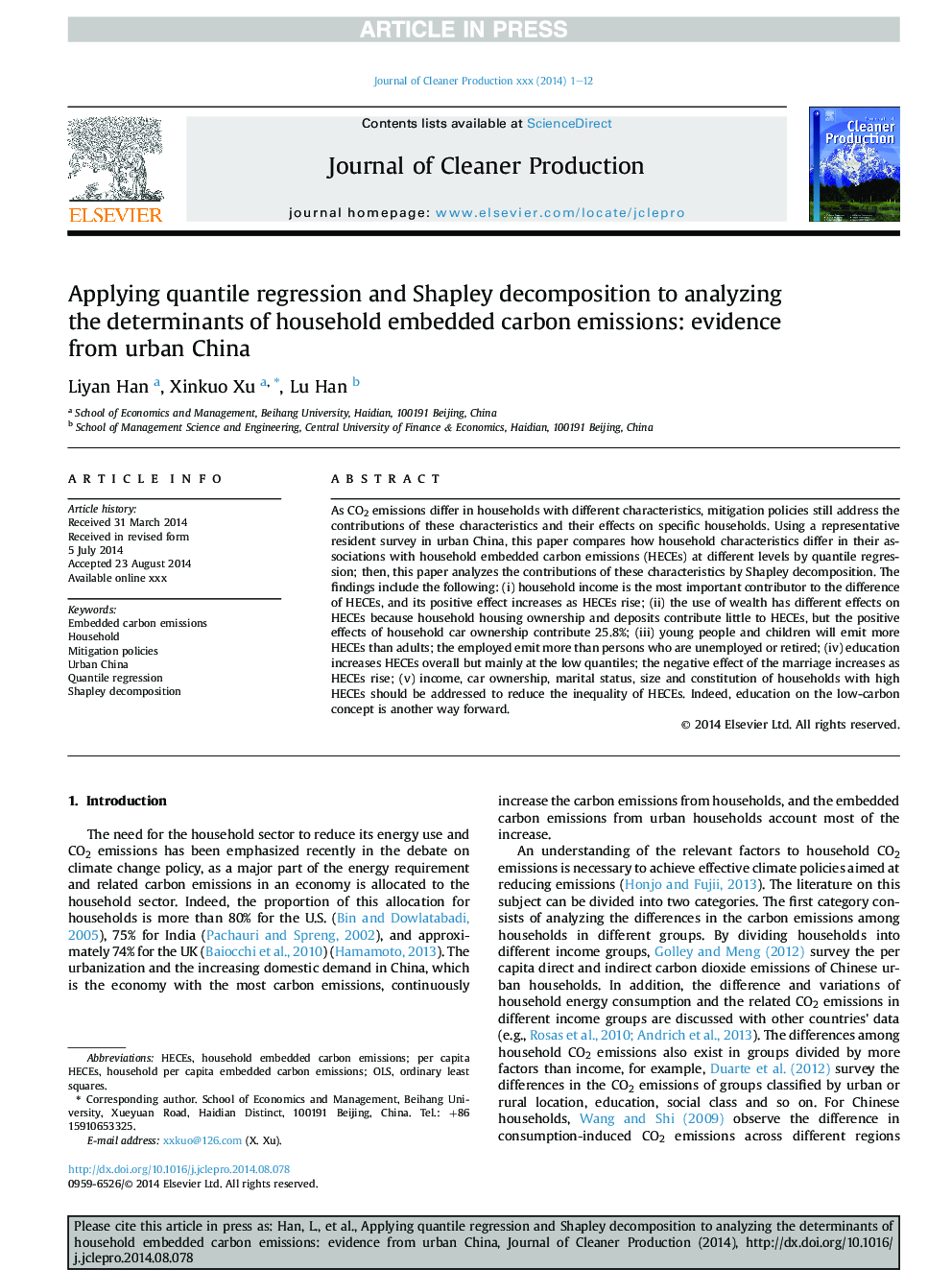| Article ID | Journal | Published Year | Pages | File Type |
|---|---|---|---|---|
| 8103523 | Journal of Cleaner Production | 2015 | 12 Pages |
Abstract
As CO2 emissions differ in households with different characteristics, mitigation policies still address the contributions of these characteristics and their effects on specific households. Using a representative resident survey in urban China, this paper compares how household characteristics differ in their associations with household embedded carbon emissions (HECEs) at different levels by quantile regression; then, this paper analyzes the contributions of these characteristics by Shapley decomposition. The findings include the following: (i) household income is the most important contributor to the difference of HECEs, and its positive effect increases as HECEs rise; (ii) the use of wealth has different effects on HECEs because household housing ownership and deposits contribute little to HECEs, but the positive effects of household car ownership contribute 25.8%; (iii) young people and children will emit more HECEs than adults; the employed emit more than persons who are unemployed or retired; (iv) education increases HECEs overall but mainly at the low quantiles; the negative effect of the marriage increases as HECEs rise; (v) income, car ownership, marital status, size and constitution of households with high HECEs should be addressed to reduce the inequality of HECEs. Indeed, education on the low-carbon concept is another way forward.
Related Topics
Physical Sciences and Engineering
Energy
Renewable Energy, Sustainability and the Environment
Authors
Liyan Han, Xinkuo Xu, Lu Han,
